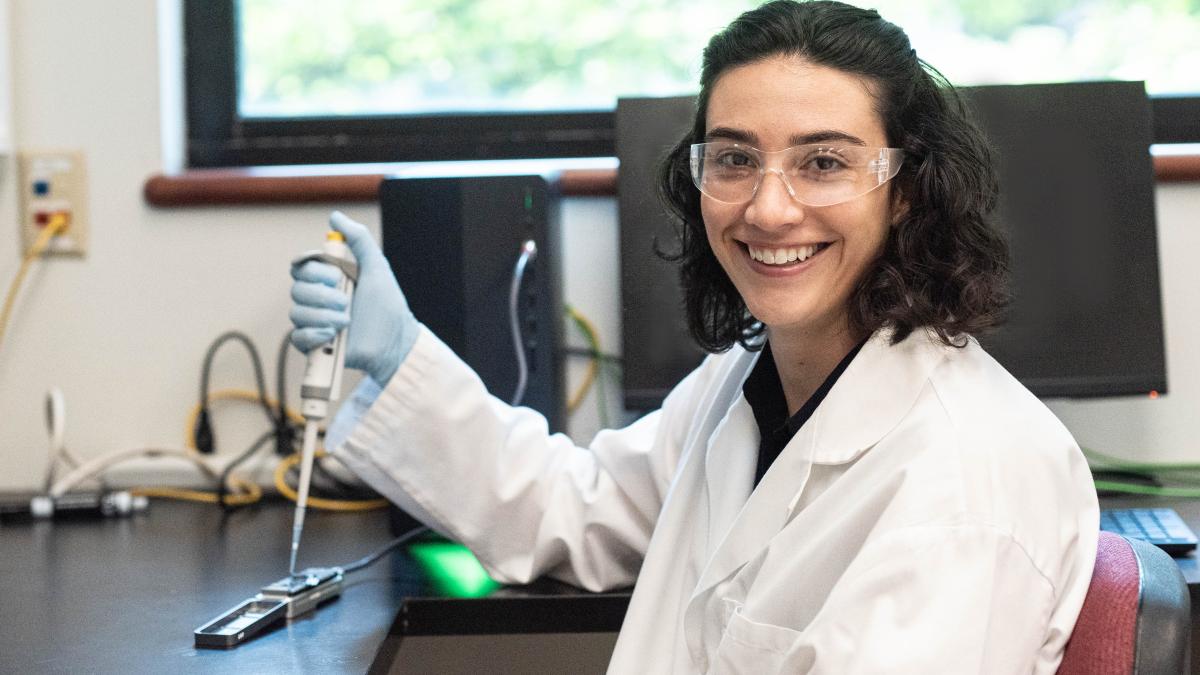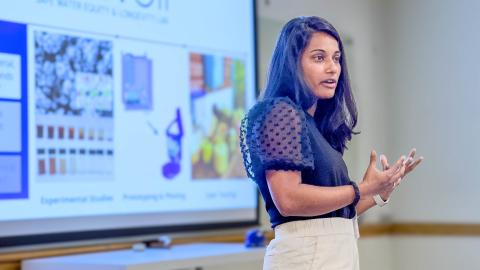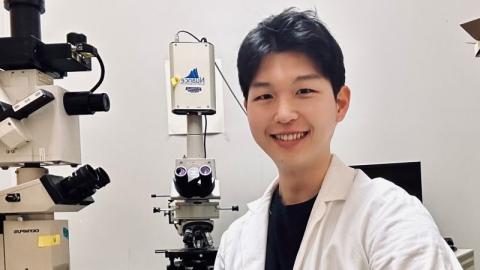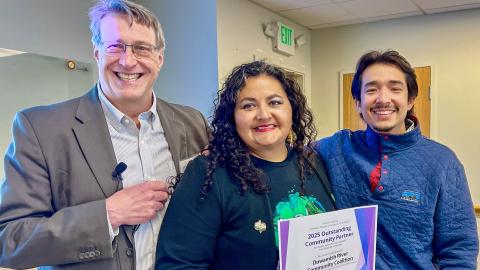
The discovery of penicillin’s antibiotic properties in 1929 is considered one of the greatest milestones of modern medicine, saving millions of lives by advancing our ability to fight infection. Unfortunately, the rise of antimicrobial resistant pathogens (bacteria, fungi, and viruses that have developed resistance to antimicrobial drugs) has undone a significant portion of that progress by making some infections more difficult or impossible to treat. The World Health Organization estimates that bacterial antimicrobial resistance contributed to 4.95 million deaths in 2019.
Erica Fuhrmeister, an assistant professor in the University of Washington Departments of Environmental and Occupational Health Sciences (DEOHS) and Civil and Environmental Engineering, was a postdoc at Tufts University when she first focused on the problems posed by antimicrobial resistance in organisms like Escherichia coli. Now we are seeing a rise in other organisms like the fungus Candida auris. “Five years ago we never really talked about it, and now all of a sudden there’s Candida auris in most states,” she said. “It’s a pressing problem that I like to think I have the skills to answer.”
A novel approach
Her approach is different than most studies of antimicrobial resistance because it doesn’t involve growing bacteria in a culture and assaying for resistance. “The problem with that approach,” said Fuhrmeister, “is that there’s a huge percentage of bacteria that are non-culturable and so we know a lot less about antimicrobial resistance in those organisms.”
Another complication is that some organisms that are not pathogens may contain a gene for resistance that could transfer that resistance to a pathogen. “Because of that horizontal gene transfer we’re interested in all the different bacterial reservoirs of antimicrobial resistance, not just the pathogens we can culture. We’re trying to take the most comprehensive look at antimicrobial resistant genes,” said Fuhrmeister
That means taking all the genetic material that’s in a sample, sequencing it, and aligning it to a database of resistance genes. “It’s taking a genomic approach rather than a culture-based approach,” said Fuhrmeister. It allows her and her team to look at associations between antimicrobial resistance genes and environmental conditions such as animal exposure, water sanitation, and hygiene.
The role of environment
Fuhrmeister collaborated with Karen Levy, a Professor in DEOHS, to examine such associations in a population of pregnant women and children in Northwest Ecuador where there is high variability in sewage containment and access to clean drinking water. “Overall we saw some associations with animal exposure and some associations with access to adequate drinking water and also drinking water that was supplied for a longer time,” said Fuhrmeister. Such insights are crucial for developing effective surveillance, prevention and treatment strategies to combat the rising global threat of antimicrobial resistance.
Engaging educators
In 2023, Fuhrmeister received a $40,000 EDGE pilot grant to support her work advancing the study of antimicrobial resistance through her metagenomic approach. She also received a $10,000 supplement to support community engagement focused on developing a learning module for Washington State communities. “Engaging with the public about antimicrobial resistance provides an exciting opportunity to get communities involved as stakeholders in a global problem,” said Fuhrmeister.
Fuhrmeister worked with Hilary McLeland-Wieser, a graduate student, the EDGE Community Engagement Core, and Lauren Sarkissian in the Washington Department of Health One Health office to reach out to high school health and science teachers across Washington and administer a survey asking about how they think and teach about antimicrobial resistance. They learned that teachers wanted something that was modular and captivating, and that students preferred information about animals and the environment to information about humans. In response they came up with a One Health and Antimicrobial Resistance Module aligned with Washington teaching standards which they are hoping that teachers will implement and evaluate.
Last summer she and McLeland-Wieser presented the module at a STEM forum hosted by the North Central Educational Service District where they learned more about non-traditional classrooms where teachers and students have more freedom in what they teach and how in depth they go.
“I knew that teachers are busy, but the amount of effort that they have to go to to do something that's above and beyond their typical curriculum is beyond what we thought. And so trying to make it as easy as possible for them has become the center of what we do,” said Fuhrmeister. View the module created by McLeland Wieser and Fuhrmeister. It includes a game with marshmallows and M&Ms to simulate antimicrobial resistance.
- Functional Genomics, Proteomics, and Metabolomics
- Genomics
- Community Engagement
- Gene Environment Interactions


